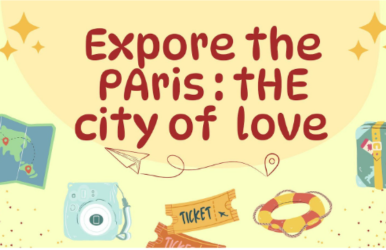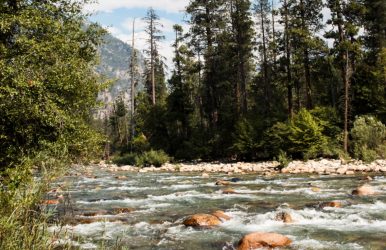2-Day Paris Travel Itinerary: Explore The City of Love in 2024
BY Sibashree Sep 19, 2024
Visiting Paris at least once is on everyone’s travel bucket list. I’ve been to Paris a couple of times and trust me, even a week would not be enough to explore the whole city, let alone two days. But not to worry! There are several creative ways to explore a place in less time, like the Paris Hop on Hop off buses that take you around the city and all its major attractions in a short amount of time. The city has endless museums, monuments, stores, etc., and it’s nearly impossible to tour all of them in 2 days. But I have an efficient Paris travel itinerary for you, where you can cover every significant landmark and popular restaurant in just two days! Paris Trip Itinerary Day 1 Supposing you’ve arrived a night before and have two whole days on your hands, let’s start with the first and the most popular attraction — the Eiffel Tower after you’ve had your breakfast. Eiffel Tower This is the place you HAVE to visit with Hop on Hop off Bus even if you’re in Paris for a couple of hours. Although it might get crowded as it is on weekends, trust me, it’s all worth it! The tickets are available online. You can also book tickets from the counter at the tower's base. Timings Morning, 9:00 till midnight, from the middle of June till early September. Morning 9:30 till Evening, 11:00, throughout the remaining months of the year (During Easter weekend and Spring, the closing time is extended another hour) Ticket Price Second floor (Ticket with access lift): Adult - €22.60; youth rate (aged 12-24) — €11.30; Kids (aged 4-11) — €5.70; Disabled - €5.70 The Top (Ticket with lift access: Adult - €35.30; youth rate (aged 12-24) — €17.70; Kids (aged 4-11) — €8.90; Disabled - €5.70 Second floor (Ticket with access to stairs): Adult - €14.20; youth rate (aged 12-24) — €7.10; Kids (aged 4-11) — €3.60; Disabled — €3.60 Ticket with access stairs 2nd-floor +lift: Adult - €26.90; youth rate (aged 12-24) — €13.50; Kids (aged 4-11) — €6.80; Disabled — €6.80. The top, ticket to the top via the elevator with a glass of champagne: Adult - €58.30 Second-floor ticket to the second floor via the elevator with a glass of champagne: Adult - €43.60 Second-floor ticket to the second floor via the stairs with a glass of champagne: Adult - €35.20 Les Invalides After your morning overlooking the city from the top, you can head to Les Invalides, just 20 minutes away from the Eiffel Tower. Witness Napoleon’s tombstone in the church. Also right opposite the church is Musée Rodin, a must-visit! Timings of Les Invalides Opens at 10 am each day. You can enter till 6 pm Every month, the gates open late on the first Friday. Timings remain 6 pm till 10 pm Stays closed on January 1st, May 1st and December 25th Timings of Musée Rodin Open every day except monday. Gates open at 10 a.m. and close by 6.30 pm. The last entry is at 5.45 pm. Closed on January 1, May 1 and December 25 Gift store is open from Tuesday to Sunday, 10 am to 6 pm. Ticket prices of Les Invalides Museum and exhibitions: full price: €15; discounted price: €12; late-night opening: €10; youth (aged 18-25): €5 Guided tours to museums and exhibitions: total price: €20; discounted price: €15; group (min 20 pax): €17. Invalides Musical Season Concerts: Saint-Louis Cathedral Concert - Cat.1 - €35, Cat.2 - €15 (8 pm); Turenne Room Concert:12.15pm) - €10, (8 pm) - €30 Champs-Élysées and Arc de Triomphe Further following the itinerary, you’ll get to Champs-Élysées and from there to Arc de Triomphe. You can explore this beautiful place and shop from one of the most famous French boutiques. Give your trip a little halt and have a coffee and snack at the café nearby, savoring the beauty of Paris. Timings Open from April 1st upto September 30th. Every week, you can visit From Wednesday to Monday — from 10 am to 11 pm and Tuesday from 11 am to 11 pm. Opens October 1st. Visits continue till March 31. Visitors are allowed From Wednesday upto Monday - 10 am and 10:30 pm; Tuesdays - 11am to 10:30pm Closed on: On two days, gates close within 4 pm. The dates are 24 and 31 December 2024. The days of the year when the place is closed are January 1st, May 1st, May 8 (morning), July 14 (morning), November 11 (morning), and December 25. Ticket Price Single price: €16 Grand Voyageur, at €13 only, for members who have subscription cards Dinner: When you have just 2 days in Paris, make sure you make the most out of the culinary delights. Chez Janou is one of my favorite local restaurants. Have rib steak, tagliatelle with snails, and braised duck breast. Paris Trip Itinerary Day 2 Leave the second day mainly for the museums and artistic tours, which is a must whenever you’re in France. But before all that let's start with an amazing French breakfast. Breakfast: Head to one of the most famous bakeries in Paris — Boulangerie Mamiche. You can find everything here from doughnuts to cookies to baguettes and much more! Do try their babka, made of rich brioche dough braided with chocolate. Louvre Museum The Louvre Museum is the largest-ever private collection of ancient Roman sculptures assembled throughout the 19th century and marks my words this collection will blow your mind! Timings Monday, Thursday, Saturday, and Sunday: 9 in the morning to 6 in the evening On Wednesday and Friday, gates open at 9 am and close by 9 pm Tuesday: Closed Ticket Price General admission: €22 Under 18-year-olds, under 26-year-old residents of the EEA: Free Audio guide: €6 Guided tours, storytime, and workshops + Louvre: €31 Palais Garnier The famous opera house is undoubtedly one of Paris's most picturesque architectural structures. We can also list it among one of the most majestic theaters in Europe. Spend some time here observing the architecture and details of the beautiful architecture. Timings Every day from 10 in the morning to 5 in the evening Gates remain shut exceptionally on January 1st, May 1st and December 25th Ticket Prices Full price: €15 Reduced price: €10 Free entry for children < 12 years, job seekers, disabled people, and accompanying persons. Jardin du Luxembourg Sit and enjoy the sunset at one of the most beautiful gardens in the city. You can stake a stroll, have ice cream and enjoy some peaceful time with your loved ones here. Timings Opening hours: 7:30 am to 8:15 am Closing hours: 4:30 pm to 10:30 pm Ticket prices Entry to the Luxembourg Gardens in Paris is free Summing Up So this was the most efficient 2-day itinerary to tour Paris and covers many must-see attractions, providing a balanced mix of art, history, and the vibrant Parisian atmosphere!. If you want you can add or remove some locations from this itinerary according to your preferences. Also read Top 10 Most Popular Paraguay Food That You Must Try. Top 13 Famous Wonders Of India That You Must Visit! [Updated 2024]














